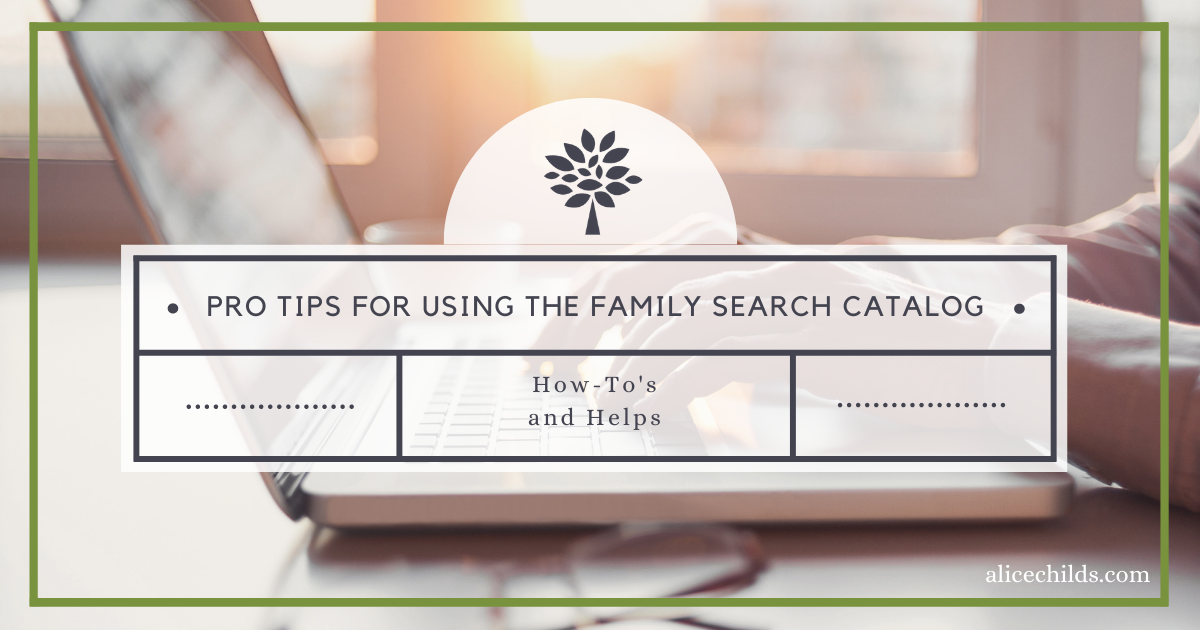
One of the best tools for genealogy research is the FamilySearch Catalog. The catalog is a guide to genealogy records and books available on FamilySearch.org, in local family history centers around the world, and in the Family History Library in Salt Lake City, Utah. As a professional genealogist I use the FamilySearch catalog all the time. If you are new to the catalog, you can learn more about it by reading Introduction to the FamilySearch Catalog in the FamilySearch Research Wiki or Diana Elder’s article The FamilySearch Catalog: A Researcher’s Best Friend at Family Locket.
After extensive catalog use over the last couple of years, I have learned a few tricks that help me use the catalog more efficiently. Today I will share those tips so that you too can take advantage of these time-savers.
Pro Tip #1: Understand the icons used in the FamilySearch catalog.
This might seem like a very basic tip to some, but I have found that many researchers don’t fully understand the meaning of these icons. Once you locate records for the locality you are researching, it is imperative that you know how the records can be accessed. With an understanding of the ease of access for a record, you can prioritize records that you will be able to access from home over those that must be viewed at a family history center or FamilySearch affiliate library. These could be prioritized before those that you have travel to Salt Lake or hire a researcher to look up at the Family History Library itself. Here’s a chart you can refer to that will help you remember:

Pro Tip #2: Use the “Find a Collection shortcut to access collections quickly.
FamilySearch has 3,055 Historical Record Collections that range from compilations of vital records to land and probate records to censuses and more. Some are indexed and some are browse-only. These collections are incorporated into the results that come up when you perform searches in the FamilySearch catalog, but there is a shortcut that is located on the Search Historical Records page at FamilySearch.org. Access this page using this path: Home Page > Search > Records.
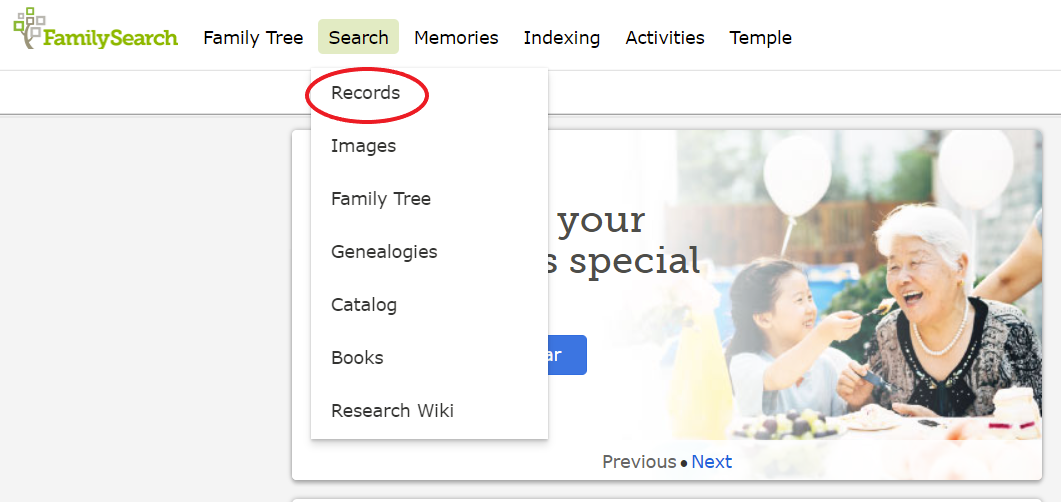
If I want to search the 1850 census, instead of going to Home Page > Catalog > Place Search > United States > Census Records > 1850 and then scrolling down the list of 15 resulting options for 1850 census, I simply go to Home Page > Search > Records and type “1850 United States Census” in the Find a Collection box on the lower right-hand side of the page. The 1850 United States Census pops up and I can click on it to access the collection. As you can imagine, fewer steps make for greater efficiency in my research.
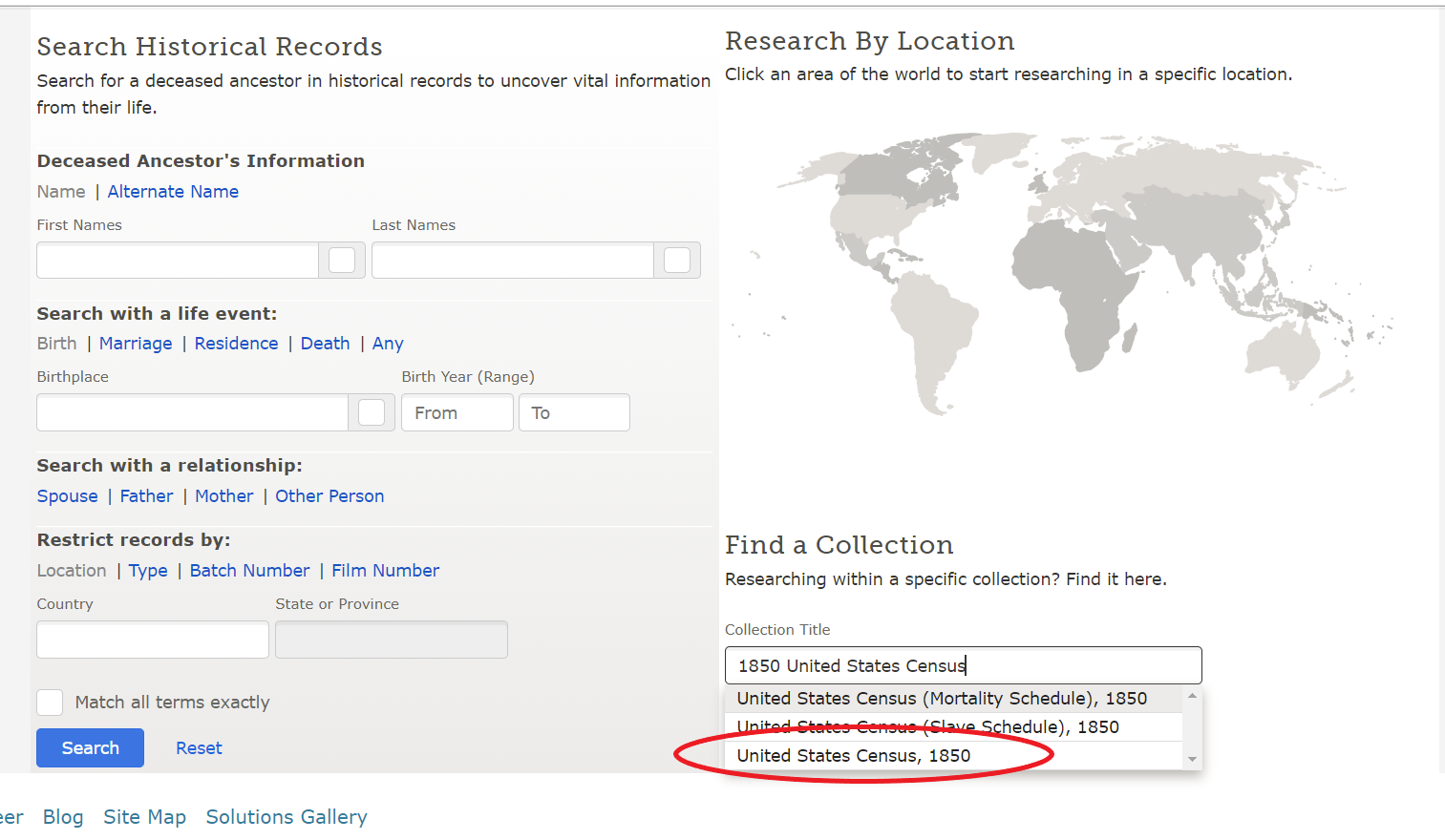
To find out what record collections are available for your locality, type the locality into the Find a Collection box and see what comes up. For example, typing “Pennsylvania” in the Find a Collection Box brings up quite a lengthy list of collections. If I want to search probate records, I simply scroll down until I find “Pennsylvania Probate Records, 1683-1994” and click the link to go directly to that collection to begin searching. It is important to remember that there are thousands of records in the catalog that are not contained in these collections, but this shortcut to 3000+ record collections makes the research process more efficient and I use it all the time.
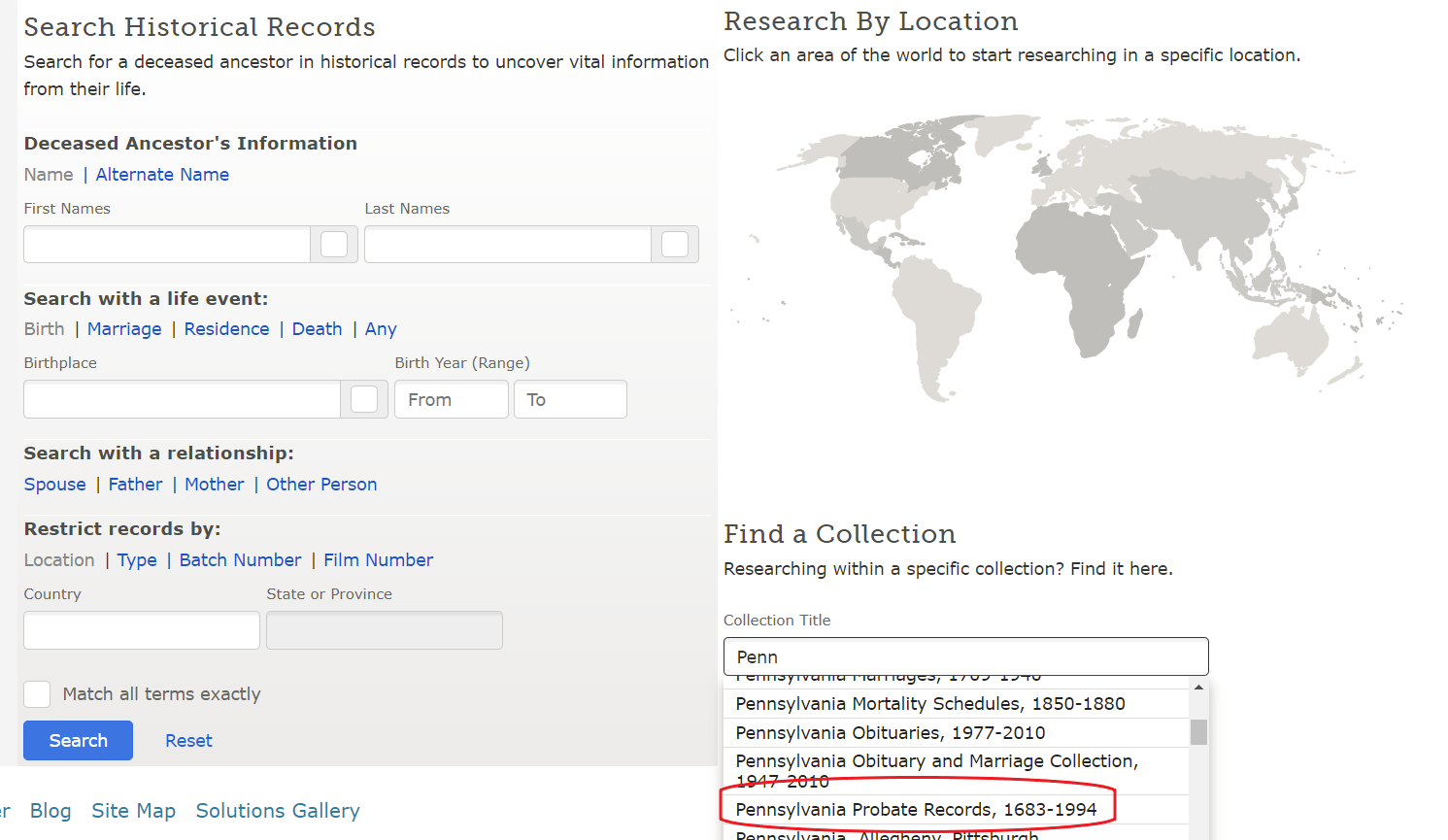
Pro Tip #3: Track down digitized versions of books and microfilms.
FamilySearch has digitized thousands of books and microfilms, and it’s easy to find those that pertain to a certain locality by doing a place search in the catalog. Look under subheadings like “History” or “Biography” for a few examples. Sometimes when you click on one of these items, the catalog will tell you that the item is only available in book form or on microfilm/microfiche at the Family History Library in Salt Lake. Sometimes the entry will include a link to the digitized version of the item. One thing to note is that there are often several entries for the same item in the catalog. When there are multiple entries, check each one to find the digitized version, if it exists. For example, I was looking for a history of Sussex County, New Jersey that included biographical sketches. There were three entries for the title History of Sussex and Warren Counties, New Jersey: With Illustrations and Biographical Sketches of its Prominent Men and Pioneers in the catalog:
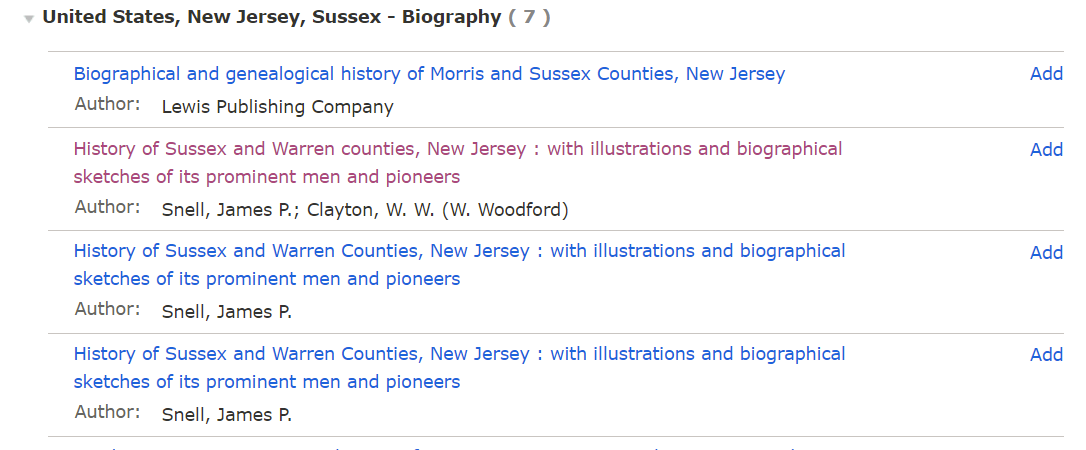
One entry pointed to a microfiche version of the book, one pointed to the digital images of the book, and one provided the call number for a physical copy, the microfiche number, and provided a link to the digitized version.

The moral of the story? Don’t get downhearted about an item only being available at the Family History Library until you have checked other entries for digitized versions. Not having to trek to the library will save both time and money. *Bonus tip: Some books that haven’t been digitized by FamilySearch may have been digitized at other sites. Try Ancestry, HathiTrust, Google Books, etc.
Pro Tip #4: Use the descriptions of digitized records to help locate documents in browse-only collections more efficiently.
I recently needed to find the original birth record for a child named Meyer Gordon who was born in Philadelphia in 1898. FamilySearch has a collection titled Birth returns, 1860-1903, filed by the attending physician, midwife, or hospital for the city of Philadelphia. The images are not indexed, and unfortunately I did not know the name of the attending physician. After looking at a few of the films, I calculated that I might have to browse 10,000 images or more to find the record I needed, a process that would take several hours.

Fortunately for researchers everywhere, indexes and registers have often been created for these types of collections. By reading the collection description, I learned that “These records are the source of information for the Birth registers, 1860-1903, for the city of Philadelphia.” A title search of the catalog for Birth registers, 1860-1903, for the city of Philadelphia revealed that FamilySearch also holds those records, and they have been indexed in the collection Pennsylvania, Philadelphia City Births. A quick index search resulted in an entry for Meyer Gordon with a link to an image of the register page. The register entry included the name of the attending physician, A.L. Barcus:

With the name of the attending physician provided on the register entry, I returned to the browse-only birth records. By reading the rest of the description that was provided, I learned additional details about how the records were organized and I was able to locate the original birth record in about 30 minutes. The total process took just under an hour. You can see that taking the time to read the description of a browse-only record collection could lead to resources that will help you find the record of interest much more efficiently.
I hope these pro tips for using the FamilySearch Catalog will help you save time and become a more efficient researcher. I would love to hear what tricks and time savers you employ when using the catalog. Share by leaving a comment below.

[…] another article about research […]